Kshata, Kṣata: 20 definitions
Introduction:
Kshata means something in Hinduism, Sanskrit, the history of ancient India, Marathi, Hindi. If you want to know the exact meaning, history, etymology or English translation of this term then check out the descriptions on this page. Add your comment or reference to a book if you want to contribute to this summary article.
The Sanskrit term Kṣata can be transliterated into English as Ksata or Kshata, using the IAST transliteration scheme (?).
In Hinduism
Ayurveda (science of life)
Toxicology (Study and Treatment of poison)
Source: Shodhganga: Kasyapa Samhita—Text on Visha ChikitsaKṣata (क्षत) refers to a “bite wound” (e.g., caused by a rat or snake), according to the Kāśyapa Saṃhitā: an ancient Sanskrit text from the Pāñcarātra tradition dealing with both Tantra and Viṣacikitsā—an important topic from Āyurveda which deals with the study of Toxicology (Viṣavidyā or Sarpavidyā).—Kāśyapa has recommended a slew of generic formulae that successfully neutralise rat poison.—According to Kāśyapasaṃhitā (verse 11.50-51): “Equal measures of Karṇikā and Jīvantī, salt, leaves and fruit of Guñjā, must be placed in Hemarasa. (Copper sulphate which is anti-bacterial). This solution must be sprinkled on the spot of the bite (kṣata-mūrdhan) [niṣiñced aṅgulībhis tatkṣatamūrdhni sitāśmaje]. The finger nails must be dipped in the solution and placed in the nostril”.
Unclassified Ayurveda definitions
Source: archive.org: Vagbhata’s Ashtanga Hridaya Samhita (first 5 chapters)Kṣata (क्षत) refers to a “rupture” (in general), and is mentioned in verse 2.6, 4.32 and 5.22 of the Aṣṭāṅgahṛdayasaṃhitā (Sūtrasthāna) by Vāgbhaṭa.—Accordingly, “one shall then turn to a sternutatory, a gargle, an inhalant, and betel; betel (is) unwholesome [apathyaṃ 7 b] for those affected with pulmonary rupture (uraḥ-kṣata), hemorrhage, and eyes irritated by roughness”.
Note (verse 2.6): Kṣata denotes a rupture in general as well as a rupture of the lungs; compare the definitions given in Suśrutasaṃhitā IV 2.20 sq. and VI 41.24. Here it must be understood in the latter sense, as appears from Candranandana’s gloss uraḥkṣata “pectoral rupture”, and consequently has been translated by glo-’grams (“pulmonary rupture”) (in Mahāvyutpatti 9513 also written glo-’drams-po). JSTP have bio instead of glo, a scarce secondary form recurring in 5.49 as the reading of N and in 5.67 again as that of NP.
Note (verse 4.32): Kṣata (“rupture”) signifies, according to Suśrutasaṃhitā (IV.2.20 sq.)—“an external wound at any part of the body that (is) neither a cut nor a stab (but is) indicative of the symptoms of both (and) uneven”. Here it has been turned into its opposite mthson rmas (“sword- or spear-wound”), which would rather be chinna or viddha in Sanskrit terminology.—For rmas CD have substituted the alternative spelling smas.
Source: gurumukhi.ru: Ayurveda glossary of terms1) Kṣata (क्षत):—Ulceration
2) [kṣataṃ] Laceration.
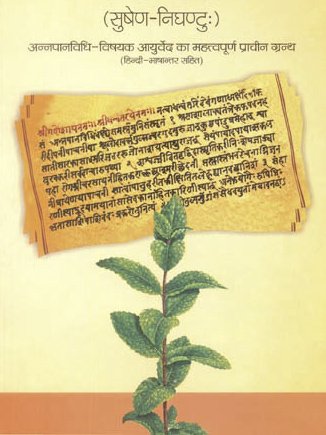
Āyurveda (आयुर्वेद, ayurveda) is a branch of Indian science dealing with medicine, herbalism, taxology, anatomy, surgery, alchemy and related topics. Traditional practice of Āyurveda in ancient India dates back to at least the first millenium BC. Literature is commonly written in Sanskrit using various poetic metres.
Purana and Itihasa (epic history)
Source: archive.org: Shiva Purana - English TranslationKṣata (क्षत) refers to “being wounded”, according to the Śivapurāṇa 2.3.5.—Accordingly, after Goddess Śivā (i.e., Umā/Durgā) granted a boon to Menā:—“[...] O celestial sage, when Indra, the slayer of Vṛtra, became angry and began to chop off the wings of mountains, [Maināka] retained his wings, nay, he did not even feel the pain of being wounded by the thunderbolt [i.e., pavi-kṣata]. He had good limbs. He had neat strength and prowess. He was the most important of all the mountains born of him. He too became the lord of mountains. [...]”.
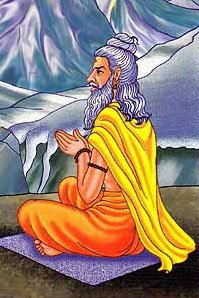
The Purana (पुराण, purāṇas) refers to Sanskrit literature preserving ancient India’s vast cultural history, including historical legends, religious ceremonies, various arts and sciences. The eighteen mahapuranas total over 400,000 shlokas (metrical couplets) and date to at least several centuries BCE.
Shaivism (Shaiva philosophy)
Source: Brill: Śaivism and the Tantric Traditions (philosophy)Kṣata (क्षत) refers to “being pestered (by logicians)” (as opposed to Akṣata—‘not pestered’), according to the Nyāyamañjarī, vol. I, 326.—Accordingly, “[...] Among these [two types of inference,] who would not admit the validity of an inference such as that [of fire] from smoke? So [people] apprehend what is to be established [by such an inference] even though they are not pestered (akṣata) by logicians. But the validity of an inference regarding such [entities] as the Self, God, an omniscient or an afterlife is not acknowledged by those who know reality”.
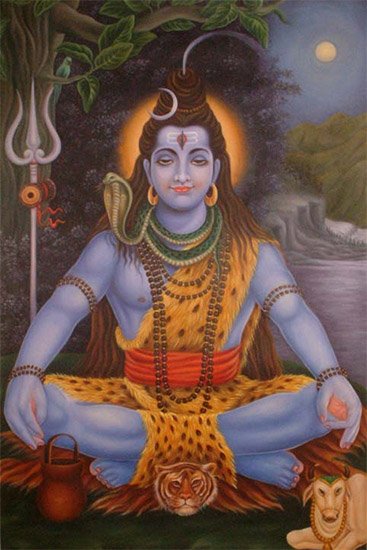
Shaiva (शैव, śaiva) or Shaivism (śaivism) represents a tradition of Hinduism worshiping Shiva as the supreme being. Closely related to Shaktism, Shaiva literature includes a range of scriptures, including Tantras, while the root of this tradition may be traced back to the ancient Vedas.
Shaktism (Shakta philosophy)
Source: Brill: Śaivism and the Tantric Traditions (shaktism)Kṣata (क्षत) refers to “one who has destroyed (his adversaries)”, according to the King Vatsarāja’s Pūjāstuti called the Kāmasiddhistuti (also Vāmakeśvarīstuti), guiding one through the worship of the Goddess Nityā.—Accordingly, “[...] I worship the three-eyed sharp-natured Kṣetreśa. His body is black, he has destroyed his adversaries (kṣata-vidviṣa), he carries a skull-bowl and a spear, [but] he is compassionate. I resort to Śaṅkhanidhi and Padmanidhi, who who sit upon a conch and lotus [respectively] as their seats. They are patient, bear the gestures of generosity and protection in their hands, and bring about everyone’s dreams. [...]
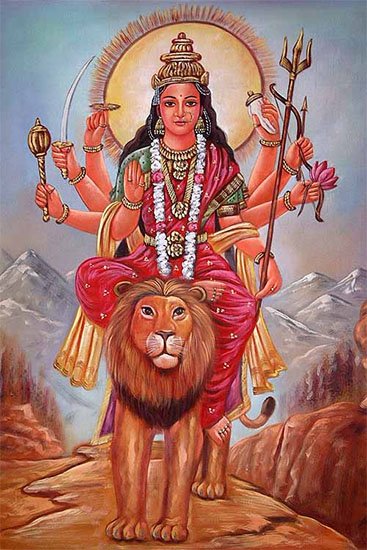
Shakta (शाक्त, śākta) or Shaktism (śāktism) represents a tradition of Hinduism where the Goddess (Devi) is revered and worshipped. Shakta literature includes a range of scriptures, including various Agamas and Tantras, although its roots may be traced back to the Vedas.
Vastushastra (architecture)
Source: Brill: Śaivism and the Tantric Traditions (architecture)Kṣata (क्षत) refers to “(being) wounded”, according to the Devyāmata (in the section śalyoddhāra-paṭala or “excavation of extraneous substances”).—Accordingly, “[...] If a heretic is seen, that brings an undesirable outcome to householders. If one hears someone hurt, wounded (kṣata), or killed, or something broken, then [the officiant] should not divide the site with cords. If there are persons who are not praised, undesirable, or blameworthy, then one should avoid seeing such persons, hearing [the names of] such persons announced, and hearing the voices of such persons. [...]”.
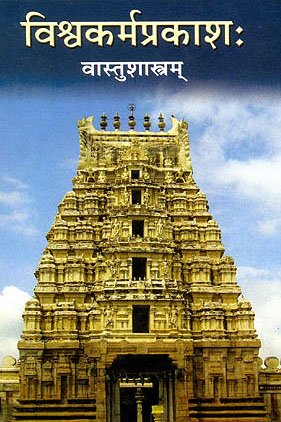
Vastushastra (वास्तुशास्त्र, vāstuśāstra) refers to the ancient Indian science (shastra) of architecture (vastu), dealing with topics such architecture, sculpture, town-building, fort building and various other constructions. Vastu also deals with the philosophy of the architectural relation with the cosmic universe.
India history and geography
Source: Cologne Digital Sanskrit Dictionaries: Indian Epigraphical GlossaryKṣata.—(EI 23), engraved; cf. utkīrṇa, udghāṭita, etc. Cf. Prakrit chata (EI 7), ‘written’ (Select Inscriptions, p. 202). Note: kṣata is defined in the “Indian epigraphical glossary” as it can be found on ancient inscriptions commonly written in Sanskrit, Prakrit or Dravidian languages.
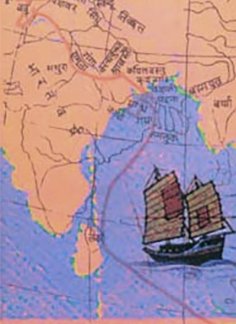
The history of India traces the identification of countries, villages, towns and other regions of India, as well as mythology, zoology, royal dynasties, rulers, tribes, local festivities and traditions and regional languages. Ancient India enjoyed religious freedom and encourages the path of Dharma, a concept common to Buddhism, Hinduism, and Jainism.
Languages of India and abroad
Marathi-English dictionary
Source: DDSA: The Molesworth Marathi and English Dictionarykṣata (क्षत).—n (S) A wound or a sore.
--- OR ---
kṣata (क्षत).—p S Wounded or hurt.
--- OR ---
kṣata (क्षत) [or क्षत्, kṣat].—f S Sneezing. v yē.
Source: DDSA: The Aryabhusan school dictionary, Marathi-Englishkṣata (क्षत).—n A wound. p Wounded.
Marathi is an Indo-European language having over 70 million native speakers people in (predominantly) Maharashtra India. Marathi, like many other Indo-Aryan languages, evolved from early forms of Prakrit, which itself is a subset of Sanskrit, one of the most ancient languages of the world.
Sanskrit dictionary
Source: DDSA: The practical Sanskrit-English dictionaryKṣata (क्षत).—p. p. [kṣaṇ-kta]
1) Wounded, hurt, injured, bitten, torn, rent, broken down &c.; see क्षण् (kṣaṇ); रक्तप्रसाधितभुवः क्षतविग्रहाश्च (raktaprasādhitabhuvaḥ kṣatavigrahāśca) Ve.1.7; Kumārasambhava 4.6; R.1.28;2.56;3.53.
2) Diminished; trodden.
-tam 1 Scratching, a scratch.
2) A wound, hurt, injury; क्षते प्रहारा निपतन्त्यभीक्ष्णम् (kṣate prahārā nipatantyabhīkṣṇam) Pañcatantra (Bombay) 2.178; क्षते क्षारमिवासह्यं जातं तस्यैव दर्शनम् (kṣate kṣāramivāsahyaṃ jātaṃ tasyaiva darśanam) Uttararāmacarita 4.7; क्षारं क्षते प्रक्षिपन् (kṣāraṃ kṣate prakṣipan) Mṛcchakaṭika 5.18; नख° (nakha°) Kumārasambhava 3.29.
3) Danger, destruction, peril; क्षतात् किल त्रायत इत्युदग्रः (kṣatāt kila trāyata ityudagraḥ) R.2.53.
Source: Cologne Digital Sanskrit Dictionaries: Shabda-Sagara Sanskrit-English DictionaryKṣata (क्षत).—mfn.
(-taḥ-tā-taṃ) 1. Hit, hurt, wounded, &c. 2. Broken, torn, rent. 3. Trodden or broken down. 4. Impaired, diminished. 5. Destroyed. n.
(-taṃ) A wound, sore, a hurt. E. kṣaṇ to hurt. affix kta, deriv. irr.
Source: Cologne Digital Sanskrit Dictionaries: Cappeller Sanskrit-English DictionaryKṣata (क्षत).—[adjective] hurt, wounded, destroyed, violated. [feminine] ā a dishonoured maiden; [neuter] hurt, wound.
Source: Cologne Digital Sanskrit Dictionaries: Monier-Williams Sanskrit-English Dictionary1) Kṣata (क्षत):—[from kṣaṇa] a kṣata, kṣati, kṣatin. See, [ib.]
2) [from kṣan] b mfn. wounded, hurt, injured, [Śatapatha-brāhmaṇa vi; Yājñavalkya] etc.
3) [v.s. ...] broken, torn, rent, destroyed, impaired, [Mahābhārata] etc.
4) [v.s. ...] diminished, trodden or broken down
5) Kṣatā (क्षता):—[from kṣata > kṣan] f. a violated girl, [Yājñavalkya]
6) Kṣata (क्षत):—[from kṣan] n. a hurt, wound, sore, contusion, [Mahābhārata; Suśruta] etc.
7) [v.s. ...] rupture or ulcer of the respiratory organs
8) [v.s. ...] Name of the sixth astrological mansion, [Varāha-mihira’s Bṛhajjātaka i, 16.]
Source: Cologne Digital Sanskrit Dictionaries: Yates Sanskrit-English DictionaryKṣata (क्षत):—(taṃ) 1. n. A wound; a sore. a. Wounded, broken, torn, hurt.
Source: DDSA: Paia-sadda-mahannavo; a comprehensive Prakrit Hindi dictionary (S)Kṣata (क्षत) in the Sanskrit language is related to the Prakrit words: Khaya, Chaya.
[Sanskrit to German]
Sanskrit, also spelled संस्कृतम् (saṃskṛtam), is an ancient language of India commonly seen as the grandmother of the Indo-European language family (even English!). Closely allied with Prakrit and Pali, Sanskrit is more exhaustive in both grammar and terms and has the most extensive collection of literature in the world, greatly surpassing its sister-languages Greek and Latin.
Hindi dictionary
Source: DDSA: A practical Hindi-English dictionaryKṣata (क्षत) [Also spelled kshat]:—(a) injured, wounded, hurt;—[vikṣata] wounded/torn all over.
...
Kannada-English dictionary
Source: Alar: Kannada-English corpusKṣata (ಕ್ಷತ):—[adjective] wounded; injured; hurt.
--- OR ---
Kṣata (ಕ್ಷತ):—
1) [noun] an injury done to living tissue by a cut or blow etc., esp. beyond the cutting or piercing of the skin.
2) [noun] an injury to a person’s reputation or a pain inflicted on a person’s feelings.
Kannada is a Dravidian language (as opposed to the Indo-European language family) mainly spoken in the southwestern region of India.
See also (Relevant definitions)
Starts with (+23): Kshatabhyanga, Kshatacukkilam, Kshatadrishti, Kshataghna, Kshataglapita, Kshatahara, Kshatai, Kshataja, Kshatajabha, Kshatajaksharana, Kshatajanman, Kshatajanurupa, Kshatajapata, Kshatajarnava, Kshatajashthivin, Kshatajopama, Kshatakasa, Kshatakrit, Kshatakrita, Kshatakshataru.
Ends with (+69): Adakshata, Adhyakshata, Akankshata, Akshata, Alakshata, Apakshata, Aparikshata, Apavikshata, Apratikankshata, Apratyakshata, Arukshata, Arvakshata, Atiparikshata, Avekshata, Avikshata, Brihahpatipakshata, Brihaspatipakshata, Brihatkshata, Dadhyakshata, Dakshata.
Full-text (+76): Khaya, Kshataja, Kshatari, Urahkshata, Kshatavikshata, Kshatahara, Kshatavidhvamsin, Kshatavritti, Akshata, Kshatatejas, Kshan, Kshatodbhava, Kshatakasa, Parikshata, Vikshata, Kshatodara, Kshatavrata, Kshataghna, Akshatayoni, Kshatavrana.
Relevant text
Search found 26 books and stories containing Kshata, Kṣata, Ksata, Kṣatā; (plurals include: Kshatas, Kṣatas, Ksatas, Kṣatās). You can also click to the full overview containing English textual excerpts. Below are direct links for the most relevant articles:
Sahitya-kaumudi by Baladeva Vidyabhushana (by Gaurapada Dāsa)
Text 10.197 < [Chapter 10 - Ornaments of Meaning]
Text 10.147 < [Chapter 10 - Ornaments of Meaning]
Text 7.95 < [Chapter 7 - Literary Faults]
Chaitanya Bhagavata (by Bhumipati Dāsa)
Verse 1.16.199 < [Chapter 16 - The Glories of Śrī Haridāsa Ṭhākura]
Verse 3.4.36 < [Chapter 4 - Descriptions of Śrī Acyutānanda’s Pastimes and the Worship of Śrī Mādhavendra]
Verse 3.10.61 < [Chapter 10 - The Glories of Śrī Puṇḍarīka Vidyānidhi]
Garga Samhita (English) (by Danavir Goswami)
Verse 2.5.17 < [Chapter 5 - The Liberation of Bakāsura]
Verse 2.5.22 < [Chapter 5 - The Liberation of Bakāsura]
Verse 2.5.10 < [Chapter 5 - The Liberation of Bakāsura]
Charaka Samhita (English translation) (by Shree Gulabkunverba Ayurvedic Society)
Chapter 11 - The therapeutics of Pectoral Lesions (kshata-kshina-cikitsa) < [Cikitsasthana (Cikitsa Sthana) — Section on Therapeutics]
Jivanandana of Anandaraya Makhin (Study) (by G. D. Jayalakshmi)
The diseases of the Mulādhāra < [Chapter 4 - Āyurvedic principles in Jīvanandana Nāṭaka]
Sannipātas (fevers due to Vāta, Pitta and Kapha) < [Chapter 4 - Āyurvedic principles in Jīvanandana Nāṭaka]
Hanuman Nataka (critical study) (by Nurima Yeasmin)
8. Padalālitya in the Hanumannāṭaka < [Chapter 4]